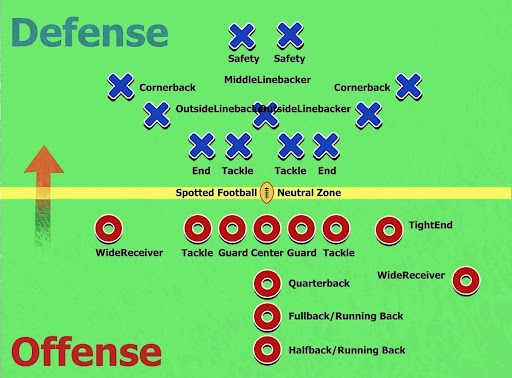The Evolution of Football Positions: How Roles Have Changed Over the Decades

Football has evolved dramatically over the decades, with tactical innovations shaping the roles of players on the pitch. From rigid formations in the early days to the fluid systems of modern football, each era has left its mark on how the game is played. As fans eagerly follow these changes, platforms like Xoi Lac TV continue to bring the latest football action to audiences worldwide.
The origins of football positions and traditional roles
Football’s earliest formations were structured, with clear distinctions between attack and defense. As the game developed, so did the understanding of player roles, setting the foundation for modern tactics.
Early formations and their influence on positions
In the late 19th and early 20th centuries, the 2-3-5 Pyramid was the most common formation. This system heavily favored attacking play, with five forwards leading the charge and only two dedicated defenders. The midfield consisted of three half-backs, responsible for linking defense with attack.
Read more: Football Standings Today on Xoi Lac TV
As football became more competitive, teams sought better defensive balance. The center-half, initially a playmaker in midfield, transitioned into a deeper role to protect the defense. This gradual shift laid the groundwork for the emergence of center-backs and defensive midfielders.
The transition to defensive structures
As teams recognized the need for defensive solidity, formations like the WM (3-2-2-3) gained popularity in the 1920s and 1930s. The introduction of a third defender gave teams greater control in stopping opposition attacks while still maintaining an offensive threat.
This evolution led to the distinction between full-backs and central defenders. Full-backs, once seen as purely defensive players, were given more responsibility in supporting the midfield. Meanwhile, central defenders took on the role of orchestrating the defensive line, a concept that remains crucial in modern football.
Tactical revolutions and the redefinition of positions
The mid-to-late 20th century saw some of the biggest tactical shifts in football history. The rigid structures of early football made way for more dynamic systems, changing the way positions were perceived.
The birth of Total Football and flexible roles
One of the most significant tactical revolutions came in the 1970s with Total Football, pioneered by the Dutch national team under Rinus Michels. This philosophy emphasized fluidity, where players could switch positions seamlessly depending on the game’s demands.
In this system, defenders would step into midfield, midfielders would drop into defense, and forwards would move across the attacking third to create space. The concept of fixed positions became obsolete, giving rise to the modern, adaptable footballer who could contribute in multiple areas of the pitch.
The rise of specialized roles in the modern game
Despite the increasing flexibility of players, certain roles became more specialized over time. The modern full-back evolved from a defensive player to a key attacking outlet, often overlapping with wingers to provide width. This change was driven by teams like Barcelona and Bayern Munich, who relied on their full-backs to stretch defenses.
Similarly, the deep-lying playmaker emerged as a crucial role, with players like Andrea Pirlo redefining the position. Instead of purely defensive duties, these midfielders became responsible for dictating the game’s tempo.
Another major shift was the introduction of the false 9, a position popularized by Lionel Messi under Pep Guardiola’s Barcelona. Instead of operating as a traditional striker, the false 9 drops deep, dragging defenders out of position and creating space for onrushing wingers or attacking midfielders.
The future of football positions: Where the game is heading
With continuous tactical evolution, football positions are likely to change even further. Modern technology and data analytics are already influencing how teams deploy players, shaping the next phase of tactical development.
Positional play and tactical fluidity
Today, many top teams no longer adhere to rigid formations but adopt positional play, where players occupy spaces rather than fixed roles. Midfielders often drop into defense to aid in build-up play, while goalkeepers are expected to act as sweepers, contributing to possession.
This shift means that future players must be even more versatile. The distinction between midfielders, defenders, and attackers continues to blur as tactical systems prioritize movement and spatial awareness over traditional positioning.
Technology and data-driven positional changes
The integration of sports analytics is revolutionizing how teams understand player roles. Through GPS tracking and AI-powered data analysis, clubs can assess player movement patterns and optimize positioning for maximum efficiency.
These advancements could lead to entirely new roles in football, where players are positioned based on real-time data rather than conventional tactics. As a result, the game may see the emergence of hybrid players who excel in multiple roles simultaneously.
Conclusion
Football’s evolution has been a constant cycle of innovation, with tactical revolutions redefining how players operate on the pitch. From the structured formations of the early 20th century to today’s fluid systems, every era has contributed to shaping the modern game. With new technologies and data-driven insights, the future promises even greater changes to positional play.






